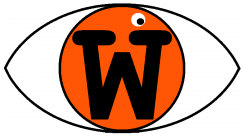WHAT’S IT ABOUT?
In medieval times, Valerie (Amanda Seyfried) lives in an idyllic village on the edge of a dark forest.
She’s in love with a destitute young wood-cutter, Peter (Shiloh Fernandez), but betrothed – against her will – to the wealthy blacksmith’s son Harry (Max Irons).
The village is a peaceful place apart from on the night of the full moon, when a werewolf bounds out of the forest and runs off with a pig that’s been tethered up outside, to minimise the destruction.
When – one month – the werewolf forgoes the pig and kills Valerie’s sister, the menfolk set off on a mission to kill the beast and rid the village of the curse forever. They return with a wolf’s head on a stake, but their celebrations are cut short when a local priest, Father Solomon (Gary Oldman) turns up and tells them they have the wrong wolf.
When the next full moon comes around, paranoia sets in around the village. Not only are the lives of the villagers under threat, but anyone who survives an attack is sure to become a werewolf too.
Peter and Harry are so busy, joining the brave men in trying to hunt down and kill the werewolf, that they almost don’t have time to compare biceps in their fight for Valerie’s love.
WHAT’S IT LIKE?
Red Riding Hood is clearly based on the fairy tale that bears its name – with the prefix “little” – here, Red Riding Hood isn’t little, but old enough to have to decide which of two men she might want to marry. And old enough to develop potential sexual feelings towards a wolf, depending on who it might turn back into after the full moon is over. On this point, prepare to be oddly disturbed.
This fits less comfortably with the fairy tale than it does with the growing oeuvre of sexy young women interacting with half-human monsters – hang on, director Catherine Hardwicke – who cut her teeth as a director with the impressive Thirteen – has since become best known for helming Twilight.
This is not a film she will look back on with any degree of pride. It can’t decide whether it’s a romantic drama about a young woman having to choose between the prince or the pauper or a who-dunnit, where said woman is the key to finding out the identity of a killer who’s haunting and taunting the village.
There are too many supporting characters who serve no purpose other than to increase the field of possible culprits and the nods to the original text are so clunky as to raise groans of embarrassment.
At every turn, we find a new cliché, making too much of the film feel contrived – the reasoning Valerie’s mother has for imposing the rich blacksmith’s son on her is straight out of the text-book.
Despite filling what would usually be the “bad guy” role, Harry is loving and gracious at every turn, making it harder to support Valerie in her choices in the first place. In some films, this could give rise to an interesting drama, with a woman torn between two good guys, but the film is too busy playing with its own take on a familiar folklore to explore the more mature elements at its heart.
Despite its shortcomings, the film is visually pleasing. Catherine Hardwicke does a good job of conjuring up the gothic mood of a dark fairy tale, with impressive production design and a far more believable werewolf than last year’s The Wolfman, which picked up a Make-Up Oscar.
But while the teenaged girls the film is aimed at might like the idea of picking their favourite suitor, few will get excited about doing this against the background of psychic conversations with a beast that’s tearing the village apart.
